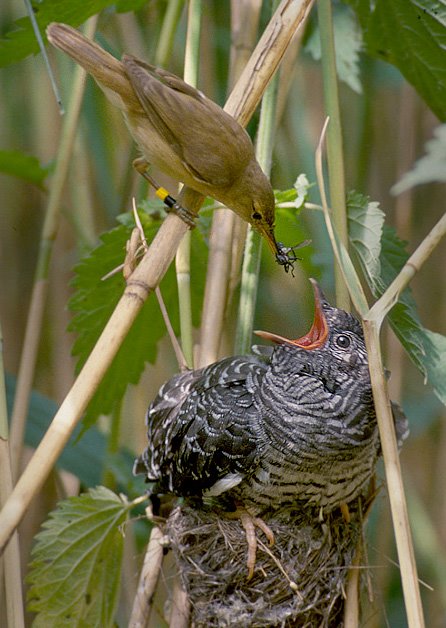The Extended Phenotype on:
[Wikipedia]
[Google]
[Amazon]
''The Extended Phenotype'' is a 1982 book by the evolutionary biologist
 Dawkins suggests that there are three forms of extended phenotype. The first is the capacity of animals to modify their environment using architectural constructions. Dawkins cited as examples caddis houses and
Dawkins suggests that there are three forms of extended phenotype. The first is the capacity of animals to modify their environment using architectural constructions. Dawkins cited as examples caddis houses and  The third form of extended phenotype is action at a distance of the parasite on its host. A common example is the manipulation of host behaviour by
The third form of extended phenotype is action at a distance of the parasite on its host. A common example is the manipulation of host behaviour by
The Tactless Meme
- by Jon Seger, ''New Scientist''
Book profile
- from ''The World of Richard Dawkins'' {{DEFAULTSORT:Extended Phenotype 1982 non-fiction books Books about evolution Books by Richard Dawkins English-language books English non-fiction books Evolutionary biology concepts Modern synthesis (20th century) Oxford University Press books Sequel books
Richard Dawkins
Richard Dawkins (born 26 March 1941) is a British evolutionary biologist and author. He is an emeritus fellow of New College, Oxford and was Professor for Public Understanding of Science in the University of Oxford from 1995 to 2008. An ...
, in which the author introduced a biological concept of the same name. The main idea is that phenotype
In genetics, the phenotype () is the set of observable characteristics or traits of an organism. The term covers the organism's morphology (biology), morphology or physical form and structure, its Developmental biology, developmental proc ...
should not be ''limited'' to biological processes such as protein biosynthesis
Protein biosynthesis (or protein synthesis) is a core biological process, occurring inside cells, balancing the loss of cellular proteins (via degradation or export) through the production of new proteins. Proteins perform a number of critical ...
or tissue growth, but ''extended'' to include all effects that a gene has on its environment, inside or outside the body of the individual organism.
Dawkins considers ''The Extended Phenotype'' to be a sequel to '' The Selfish Gene'' (1976) aimed at professional biologists, and as his principal contribution to evolutionary theory.
Summary
Genes as the unit of selection in evolution
The central thesis of ''The Extended Phenotype,'' and of its predecessor by the same author ''The'' ''Selfish Gene'', is that individual organisms are not the true units of natural selection. Instead, the gene — or the ‘active, germ-line replicator’ — is the unit upon which the forces of evolutionary selection and adaptation act. It is genes that succeed or fail in evolution, meaning that they either succeed or fail in replicating themselves across multiple generations. These replicators are not subject to natural selection directly, but indirectly through their “phenotypical effects.” These effects are all the effects that the gene (or replicator) has on the world at large, not just in the body of the organism in which it is contained. In taking as its starting point the gene as the unit of selection, ''The Extended Phenotype'' is a direct extension of Dawkins’ first book, ''The Selfish Gene''.Genes synthesise only proteins
Dawkins argues that the only thing that genes control directly is the synthesis ofprotein
Proteins are large biomolecules and macromolecules that comprise one or more long chains of amino acid residues. Proteins perform a vast array of functions within organisms, including catalysing metabolic reactions, DNA replication, res ...
s. He points to the arbitrariness of restricting the idea of the phenotype
In genetics, the phenotype () is the set of observable characteristics or traits of an organism. The term covers the organism's morphology (biology), morphology or physical form and structure, its Developmental biology, developmental proc ...
to apply only to the phenotypic expression of an organism's genes in its own body. Dawkins develops this idea by pointing to the effect that a gene may have on an organism's environment through that organism's behaviour.
Genes may affect more than the organism's body
 Dawkins suggests that there are three forms of extended phenotype. The first is the capacity of animals to modify their environment using architectural constructions. Dawkins cited as examples caddis houses and
Dawkins suggests that there are three forms of extended phenotype. The first is the capacity of animals to modify their environment using architectural constructions. Dawkins cited as examples caddis houses and beaver dams
A beaver dam or beaver impoundment is a dam built by beavers to create a pond which protects against predators such as coyotes, wolves and bears, and holds their food during winter. These structures modify the natural environment in such a way t ...
.
The second form is the manipulation of other organisms. Dawkins points out that morphology of a living organism, and possibly of that organism's behaviour, may influence not just the fitness of the organism itself but to other living organisms as well. One example of this is "parasite
Parasitism is a close relationship between species, where one organism, the parasite, lives on or inside another organism, the host, causing it some harm, and is adapted structurally to this way of life. The entomologist E. O. Wilson h ...
manipulation". This refers to the capacity, found in some parasite-host interactions, for the parasite to modify the behaviour of the host in order to enhance the parasite's own fitness. One famous example of this second type of extended phenotype is the suicidal drowning of crickets infected by hairworm, a behaviour that is essential to the parasite's reproductive cycle. Another example is seen in female mosquitoes carrying malaria parasites. The mosquitoes infected with the parasites whose preferred hosts are humans have been shown in a field experiment to be significantly more attracted to human breath and odours than uninfected mosquitoes when the parasites are at a point in their life cycle where they can infect a human target.
 The third form of extended phenotype is action at a distance of the parasite on its host. A common example is the manipulation of host behaviour by
The third form of extended phenotype is action at a distance of the parasite on its host. A common example is the manipulation of host behaviour by cuckoo
Cuckoos are birds in the Cuculidae family, the sole taxon in the order Cuculiformes . The cuckoo family includes the common or European cuckoo, roadrunners, koels, malkohas, couas, coucals and anis. The coucals and anis are sometimes separ ...
chicks, which elicit intensive feeding by the host birds. Here the cuckoo does not interact directly with the host (which could be meadow pipits, dunnocks or reed warblers). The relevant adaptation lies in the cuckoo producing eggs and chicks that resemble sufficiently those of the host species that they are not ejected from the nest. These behavioural modifications are not physically associated with the host but influence the expression of its behavioural phenotype.
Dawkins summarizes these ideas in what he terms the ''Central Theorem of the Extended Phenotype'':
Gene-centred view of life
In developing this argument, Dawkins aims to strengthen the case for a gene-centric view of the evolution of life forms, to the point where it is recognized that the organism itself needs to be explained. This is the challenge which he takes up in the final chapter entitled "Rediscovering the Organism." The concept of extended phenotype has been generalized in an organism-centered view of evolution with the concept ofniche construction
Niche construction is the process by which an organism alters its own (or another species') local environment. These alterations can be a physical change to the organism’s environment or encompass when an organism actively moves from one habita ...
, in the case where natural selection pressures can be modified by the organisms during the evolutionary process.
Reception
A technical review of ''The Extended Phenotype'' in the ''Quarterly Review of Biology'' states that, it is an “interesting and thought provoking book, once one gets to the last five chapters.” In the reviewer’s opinion, the book poses interesting questions, such as « What is the survival value of packaging life into discrete units called ‘organisms’ even though the units of selection appear to be individual ‘replicators’? » The reviewer states that no “satisfactory answer is given” to this question in the book, though Dawkins suggests that replicators that “interact favorably to create ‘vehicles’ (organisms) may be at an advantage over those that do not (Chapter 14).” The reviewer criticises the first nine chapters as being essentially a defense of Dawkin’s first book, ''The Selfish Gene''. Another review in ''American Scientist'' praises the book for convincingly promoting the idea of replication as being central to the evolutionary process. However, in the reviewer’s opinion, “its main theme - that the gene is the only unit of selection - results from incorrectly interpreting the constraints on organismal adaptation and from too narrow an interpretation of replication, a process of more general relevance than the author is willing to allow.”Uses and limitations
The concept of extended phenotype has provided a useful frame for subsequent scientific work. For example, research into the relationship between “the bacterial flora of the gut and their mammalian hosts has become a hot topic of late.” Subsequent proponents expand this theory and posit that many organisms within an ecosystem can alter the selective pressures on all of them by modifying their environment in various ways. Dawkins himself asserted, "Extended phenotypes are worthy of the name only if they are candidate adaptations for the benefit of alleles responsible for variations in them". As an illustration, one might ask: could an architect's buildings be considered part of his or her extended phenotype, much as a beaver's dam is part of its extended phenotype? The answer is clearly no; in humans, an “architect's specific alleles are neither more nor less likely to be selected based on the design of his or her latest building.”See also
* Group selection *Inclusive fitness
In evolutionary biology, inclusive fitness is one of two metrics of evolutionary success as defined by W. D. Hamilton in 1964:
* Personal fitness is the number of offspring that an individual begets (regardless of who rescues/rears/supports th ...
* Kin selection
Kin selection is the evolutionary strategy that favours the reproductive success of an organism's relatives, even when at a cost to the organism's own survival and reproduction. Kin altruism can look like altruistic behaviour whose evolution ...
References
External links
The Tactless Meme
- by Jon Seger, ''New Scientist''
Book profile
- from ''The World of Richard Dawkins'' {{DEFAULTSORT:Extended Phenotype 1982 non-fiction books Books about evolution Books by Richard Dawkins English-language books English non-fiction books Evolutionary biology concepts Modern synthesis (20th century) Oxford University Press books Sequel books